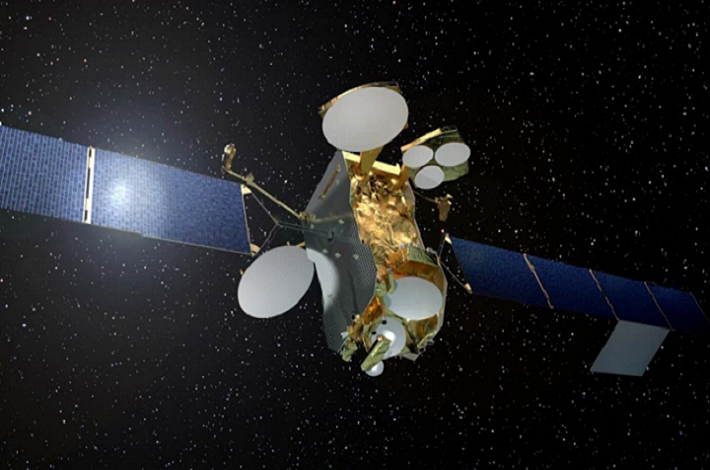The high capacity satellite reached geostationary orbit just four months after it was launched on June 1st by Ariane 5 from Kourou, in French Guiana.
“We are the first company to demonstrate full electric propulsion for satellites of this size and capacity, enabling their launch in the most cost-efficient manner,” said Nicolas Chamussy, Head of Space Systems at Airbus. “Furthermore, with our system design, operation strategy and the plasma thruster technology we implement, we have completed the fastest electric orbit raising ever from transfer to geostationary orbit, which will allow Eutelsat to put their electric satellite in service in a record time.”
The EUTELSAT 172B has 13kW of payload power, but a launch mass of only 3,550 kg, due to the latest EOR version of the Eurostar E3000 platform by Airbus, which also features a 3D printed part. This new record was possible thanks to some additional innovations by Airbus, including 3D printing technology and its Wide Angle Localisation Integrated System (WALIS) network of worldwide ground stations, which made it possible for engineers to control the EUTELSAT 172B’s orbit raising operations until it reached the geostationary orbit. In addition, a pair of deployable robotic arms helped to orientate the satellite’s electric propulsion thrusters; this made it possible to control thrust direction and attitude.
In Toulouse, the Airbus spacecraft control center was in charge of early operations, as well as deployment of the solar array and electric propulsion arms. The center finished initial testing before it began the EOR phase in June, and during the four-month period after the EUTELSAT 172B was launched, its electric thrusters efficiently propelled the satellite to orbit, “consuming almost six times less propellant mass than for a satellite with chemical propulsion.”Once the EUTELSAT 172B finishes payload in-orbit tests and drifts to its operational location, the satellite should begin commercial service next month, in order to offer the Asia-Pacific region better telecommunications, as well as in-flight broadband and broadcast services.
According to Eutelsat, the EUTELSAT 172B satellite has three distinct payloads, including trans-Pacific C-band, regular Ku-band, and an innovative High Throughput Ku-band payload designed for in-flight broadband with multiple user spots; the Panasonic Avionics Corporation has chosen the satellite as its new platform for in-flight broadband and live TV services for commercial airlines for trans-Pacific and Asian flights.“EUTELSAT 172B confirms the relevance of Eutelsat’s early adoption of electric propulsion technology to optimise capex. In combining electric propulsion, High Throughput capacity, robotic arms and 3D printing techniques, our new satellite also reflects Europe’s capability to push the envelope of innovation in order to increase the competitiveness of our business,” said Yohann Leroy, Eutelsat’s Chief Technical Officer. “We look forward to bringing EUTELSAT 172B into service next month for our clients in the Asia-Pacific region.”
Due to its electric propulsion for in-orbit raising and station-keeping, the satellite, built with 3D printing, robotics, and electric propulsion technologies, should last over 15 years in space. Together with the space agencies of other European countries, particularly France by the CNES in its PIA program (Plan d’Investissements d’Avenir) framework and the UK Space Agency, the European Space Agency (ESA) supported the development of Airbus’ Eurostar all-electric satellites.
Discuss this and other 3D printing topics at 3DPrintBoard.com, or share your thoughts in the Facebook comments below.
